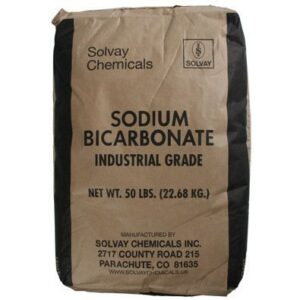Alkalinity refers to the total concentration of alkaline substances dissolved in water, such as carbonate, bicarbonate, and hydroxides. Alkalinity acts as a buffer, keeping pH from fluctuating drastically. Typically, total alkalinity levels between 80-150 parts per million (ppm) are recommended for swimming pools and spas.



Total alkalinity is a measure of the concentration of specific ionic compounds, such as carbonates and bicarbonates, in the water. These ions act as buffers, preventing sudden pH shifts and stabilizing water chemistry. This is important for people who are maintaining swimming pools so that the environment has the right pH levels for safety and control.
It is recommended to maintain the alkalinity in chlorinated pools between 80 and 120 parts per million (ppm). Anything lower will lead to pH swinging erratically upward or downward, which isn’t conducive to swimmer comfort, sanitizer effectiveness, pool clarity or equipment longevity.
To increase total alkalinity, add a pH increaser product like sodium bicarbonate as directed on the label or lower it with a pH-lowering product such as sodium bisulfate or muriatic acid. This process can be repeated multiple times to establish stable total alkalinity levels.
Why is Total Alkalinity Important in Sanitary Pool Care?
Total alkalinity is an integral factor in pool water chemistry. It helps maintain pH levels in pools, which are essential for keeping them hygienic and safe for swimmers. Poor alkalinity in the water can be a serious issue and negatively affect your swimming experience in several ways. First, it can prevent the chlorine used to disinfect your pool from working efficiently, which in turn could allow bacteria to grow more easily.
Second, it can cause scaling on pool surfaces and equipment. Finally, it can reduce the effectiveness of other additives. Ideally, your pool’s target alkalinity should be between 80-150 parts per million (ppm). This will help maintain a healthy pH in the water and also decrease the chances of scaling or cloudiness.
How to Test Total Alkalinity
Alkalinity is a measure of “buffering capacity.” It indicates how quickly acids are neutralized by dissolved compounds such as hydroxides, carbonates, and bicarbonates. These compounds help remove H+ ions and lower acidity levels in the water.
Total alkalinity can be measured using a titrator or buret. Simply place the reagent into the titrator, turn on the machine and add drops until it reaches a specific color. Now count your drops and voila! Your results!
The final total alkalinity value can be expressed as ppm or parts per million of dissolved carbonates. It’s essential to keep these levels within the recommended range in order to prevent scaling or etching on pool and spa surfaces.
How to Increase Total Alkalinity
Alkalinity is an integral factor in maintaining the chemical balance of a swimming pool or hot tub. When it’s low, the water becomes too acidic, potentially hazardous to both those using it and those who swim there. There is a degree of legal liability when it comes to public swimming pools or hot tubs, especially those you might find in the hotel or condo industry. You need to have safe levels or the Health Department can shut you down in order to ensure that the pool or tub is safe to use.
If your hot tub has low total alkalinity, it is essential to increase it promptly.
One way to increase total alkalinity in a hot tub is to add baking soda. This natural chemical can be found in most home stores. This chemical can increase both the alkalinity and therefore pH levels in the water. By practicing these techniques and keeping your pool or system monitored regularly, you should be able to maintain healthy levels of pH and achieve correct levels of total alkalinity.